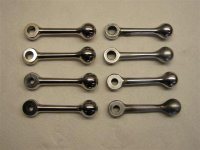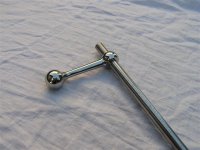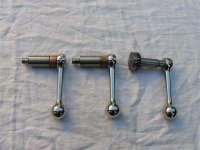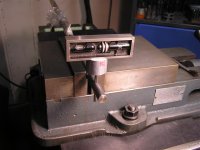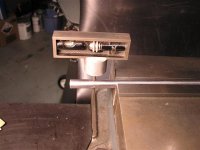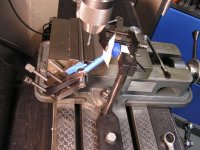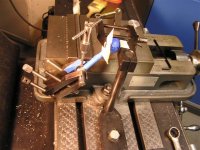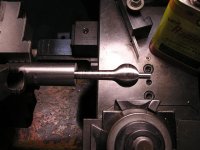DaveE907
Titanium
- Joined
- Sep 18, 2007
- Location
- Spanish Springs, NV
Recently completed a set of levers for an ELSR equipped 10EE. Made them from stainless steel to the pattern of the originals as close as they could be measured. The originals aren't very uniformly shaped so I used an average of the set of four shapes to dimension the new ones.
Didn't want to put new taper pin holes through their mating shafts so each new pin hole was aligned with the existing hole in the lever's mating shaft. As the original taper pin holes were all both offset from the shaft centerline and not perpendicular it was a careful setup for each one to drill the holes through the new levers. Proper clocking and axial position of the new lever must be achieved also.
The original pins were #1 and seated to maximum diameter so to achieve a good fit the holes were reamed to #2 taper pin size and new pins fitted.
Here are some photos of the new and old levers and the completed fitted levers.
Didn't want to put new taper pin holes through their mating shafts so each new pin hole was aligned with the existing hole in the lever's mating shaft. As the original taper pin holes were all both offset from the shaft centerline and not perpendicular it was a careful setup for each one to drill the holes through the new levers. Proper clocking and axial position of the new lever must be achieved also.
The original pins were #1 and seated to maximum diameter so to achieve a good fit the holes were reamed to #2 taper pin size and new pins fitted.
Here are some photos of the new and old levers and the completed fitted levers.


